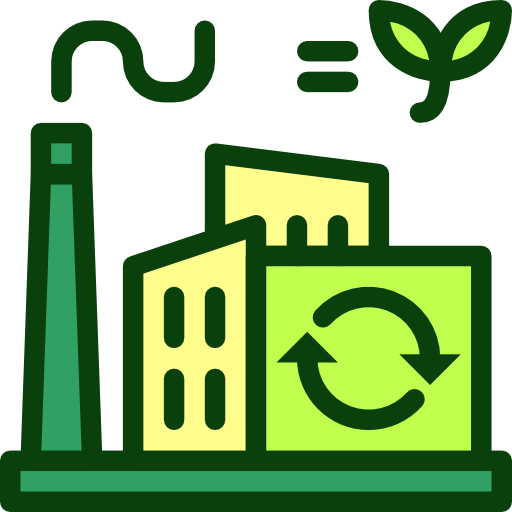Togo - Geography

Here, let us take a look at the Geography of Togo. Stretches through six distinct geographic regions; climate varies from tropical to savanna. Mother's mean age at first birth is 25 years (2017 est.) (Note: data represents median age at first birth among women 25-29), whereas, the Maternal mortality ratio is 349 deaths/100,000 live births (2023 est.)
Geographical data of Togo
| Location | Western Africa, bordering the Bight of Benin, between Benin and Ghana |
|---|---|
| Geographic coordinates | 8 00 N, 1 10 E |
| Map references | Africa |
| Tarrain | gently rolling savanna in north; central hills; southern plateau; low coastal plain with extensive lagoons and marshes |
| Natural Resources | phosphates, limestone, marble, arable land |
| Natural Hazards | hot, dry harmattan wind can reduce visibility in north during winter; periodic droughts |
| Irrigated Land | 70 sq km (2012) |
| Major rivers (by length in km) | |
| Major aquifers | |
| Land Boundaries | 1,880 km |
| Border Countries | Benin 651 km; Burkina Faso 131 km; Ghana 1,098 km |
| Coastline | 56 km |
| Climate | tropical; hot, humid in south; semiarid in north |
| Area | |
| Total Area | |
| Land Area | 54,385 sq km |
| Water Area | 2,400 sq km |
| comparative Area | slightly smaller than West Virginia |
| Maritime Claims | |
| Territorial sea | 30 nm |
| Exclusive economic zone | 200 nm |
| Elevations | |
| Highest point | Mont Agou 986 m |
| Lowest point | Atlantic Ocean 0 m |
| Mean elevation | 236 m |
| Land Use | |
| Agricultural land | 70.2% (2023 est.) |
| Agricultural land: arable land | arable land: 48.7% (2023 est.) |
| Agricultural land: permanent crops | permanent crops: 3.1% (2023 est.) |
| Agricultural land: permanent pasture | permanent pasture: 18.4% (2023 est.) |
| Forest | 22.4% (2023 est.) |
| Other | 7.4% (2023 est.) |
Population Distribution
One of the more densely populated African nations, with most of the population residing in rural communities; density is highest in the south on or near the Atlantic coast, as shown in this population distribution map
People and Society
In Togo, the different Ethnic groups are such that we have: Adja-Ewe/Mina 42.4%, Kabye/Tem 25.9%, Para-Gourma/Akan 17.1%, Akposso/Akebu 4.1%, Ana-Ife 3.2%, other Togolese 1.7%, foreigners 5.2%, no response 0.4% (2013-14 est.)
| Population | |
|---|---|
| Pop growth rate | 2.41% (2024 est.) |
| Birth rate | 30.9 births/1,000 population (2024 est.) |
| Death rate | 5.1 deaths/1,000 population (2024 est.) |
| Health expenditure | |
| Physicians Density | |
| Hospital bed Density | 0.6 beds/1,000 population (2019 est.) |
| Total fertility rate | 4.13 children born/woman (2024 est.) |
| Gross reproduction rate | 2.03 (2024 est.) |
| Contraceptive prevalence rate | |
| Est married women (ages 15-49) | 62% (2023 est.) |
| Literacy | |
| Education expenditures | |
| Net Migration rate | -1.7 migrant(s)/1,000 population (2024 est.) |
| Nationality | Togolese | Togolese (singular and plural) |
| Languages | French (official, language of commerce), Ewe and Mina (in the south), Kabye (sometimes spelled Kabiye) and Dagomba (in the north) |
| Religions | Christian 42.3%, folk religion 36.9%, Muslim 14%, Hindu <1%, Buddhist <1%, Jewish <1%, other <1%, none 6.2% (2020 est.) |
| Age Structure | |
| 0-14 years | 38.7% (male 1,749,533/female 1,699,084) |
| 15-64 years | 57% (male 2,486,142/female 2,597,914) |
| 65 years and over | 4.3% (2024 est.) (male 159,596/female 225,725) |
| Dependency Ratios | |
| Total dependency ratio | 75.4 (2024 est.) |
| Youth dependency ratio | 67.8 (2024 est.) |
| Elderly dependency ratio | 7.6 (2024 est.) |
| Potential support ratio | 13.2 (2024 est.) |
| Median Age | |
| Total | 20.7 years (2024 est.) |
| Male | 19.9 years |
| Female | 21.4 years |
| Urbanization | |
| Urban population | 44.5% of total population (2023) |
| Rate of urbanization | 3.6% annual rate of change (2020-25 est.) |
| Major urban areas (Pop) | 1.982 million LOME (capital) (2023). |
| Sex Ratio | |
| At birth | 1.03 male(s)/female |
| 0-14 years | 1.03 male(s)/female |
| 15-64 years | 0.96 male(s)/female |
| 65 years and over | 0.71 male(s)/female |
| Total population | 0.97 male(s)/female (2024 est.) |
| Infant Motality | |
| Total | 38.4 deaths/1,000 live births (2024 est.) |
| Male | 43 deaths/1,000 live births |
| Female | 33.7 deaths/1,000 live births |
| Life Expectancy at birth | |
| Total population | 72.1 years (2024 est.) |
| Male | 69.5 years |
| Female | 74.7 years |
| Drinking Water Sources | |
| Improved: urban | urban: 87% of population (2022 est.) |
| Improved: rural | rural: 58.5% of population (2022 est.) |
| Improved: total | total: 71% of population (2022 est.) |
| Unimproved: urban | urban: 13% of population (2022 est.) |
| Unimproved: rural | rural: 41.5% of population (2022 est.) |
| Unimproved: total | total: 29% of population (2022 est.) |
| Sanitation facility acess | |
| Improved: urban | urban: 82% of population (2022 est.) |
| Improved: rural | rural: 19.2% of population (2022 est.) |
| Improved: total | total: 46.7% of population (2022 est.) |
| Unimproved: urban | urban: 18% of population (2022 est.) |
| Unimproved: rural | rural: 80.8% of population (2022 est.) |
| Unimproved: total | total: 53.3% of population (2022 est.) |
| Alcohol consumption per capita | |
| Total | 1.4 liters of pure alcohol (2019 est.) |
| Beer | 0.78 liters of pure alcohol (2019 est.) |
| Wine | 0.09 liters of pure alcohol (2019 est.) |
| Spirits | 0.2 liters of pure alcohol (2019 est.) |
| Other alcohols | 0.33 liters of pure alcohol (2019 est.) |
| Tobacco use | |
| Total | 5% (2025 est.) |
| Male | 9.3% (2025 est.) |
| Female | 0.7% (2025 est.) |
| Child marriage | |
| Women married by age 15 | 6.4% (2017) |
| Women married by age 18 | 24.8% (2017) |
| Men married by age 18 | 2.6% (2017) |
Demographic profile
All Important Facts about Togo
Want to know more about Togo? Check all different factbooks for Togo below.









